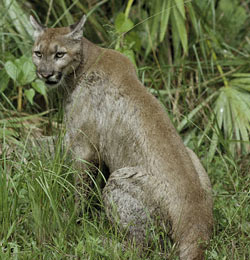In advance of the launch of our new model we wanted to introduce The Mamoni Valley (the site of our first reserves), why it is significant, the ecoReserve model and our ecological strategic contribution in the Valley.
The Mamoni Valley
The Mamoni Valley is located in narrowest portion of the North American continent (central Panama), which separates the Atlantic and Pacific Oceans. The 28000 acre Valley is part of a world recognized biodiversity hotspot and home to a diverse range of plants and animals. In addition, it is an important migration stop-over region for many North and South American birds.
For the past forty years, large areas of the valley have been deforested due to increased demands for agriculture and ranching production. Currently, the Mamoní Valley is severely fragmented and degraded which threatens the watershed and biodiversity.
What is biodiversity?
Biological diversity means the diversity, or variety, of plants and animals and other living things in a particular area or region. For instance, the species that inhabit Los Angeles are different from those in San Francisco, and desert plants and animals have different characteristics and needs than those in the mountains, even though some of the same species can be found in all of those areas. Biodiversity also means the number, or abundance of different species living within a particular region.
Physical Characteristics of the Mamoni Valley and Why It Is Significant
Part of Mesoamerican Biological Corridor: The Mesoamerican Biological Corridor is a large habitat corridor in Mesoamerica, stretching from Mexico southeastward through most of Central America, connecting several national parks. It was started in 1998 to keep critically endangered species from going extinct.
Part of Mesoamerica Biodiversity Hotspot: A biodiversity hotspot is a biogeographic region that is both a significant reservoir of biodiversity and is threatened with destruction. The Mesoamerican forests are the third largest among the world’s hotspots. Spanning most of Central America, the Mesoamerica Hotspot encompasses all subtropical and tropical ecosystems from central Mexico to the Panama Canal. This includes all of Guatemala, Belize, El Salvador, Honduras, Nicaragua, and Costa Rica, as well as a third of Mexico and nearly two-thirds of Panama.
Borders Kuna Yala (land of indigenous Kuna): Kuna Yala is an autonomous territory or comarca in Panama, inhabited by the Kuna indigenous people. The name means “Kuna-land” or “Kuna mountain” in the Kuna language
Borders Chagres National Park: Chagres National Park was established in 1985. The Chagres National Park covers 129,000 hectares and is 40 kilometers from Panama City.
About ecoReserve and The Model
ecoReserve has developed a new model to address the negative social, economic and environmental influences impacting the Mamoní Valley. The model includes three types of reserves, conservation, reforestation and sustainable livelihoods. These reserves will successfully build a multi-faceted, ecological restoration program that increases the health of the rainforest and improves the livelihoods of the people who depend upon the land.
Our ecological strategic contribution by establishing the reserves in the Mamoni Valley:
– Create buffer zone for Kuna Yala and Chagres National Park
– Strengthen biological corridor
– Protect biodiversity and animal habitats
Coming up in upcoming blogs:
Mesoamerican Biological Corridor
Mesoamerican Biodiversity Hotspot
Kuna Yala (land of indigenous Kuna)
Chagres National Park




